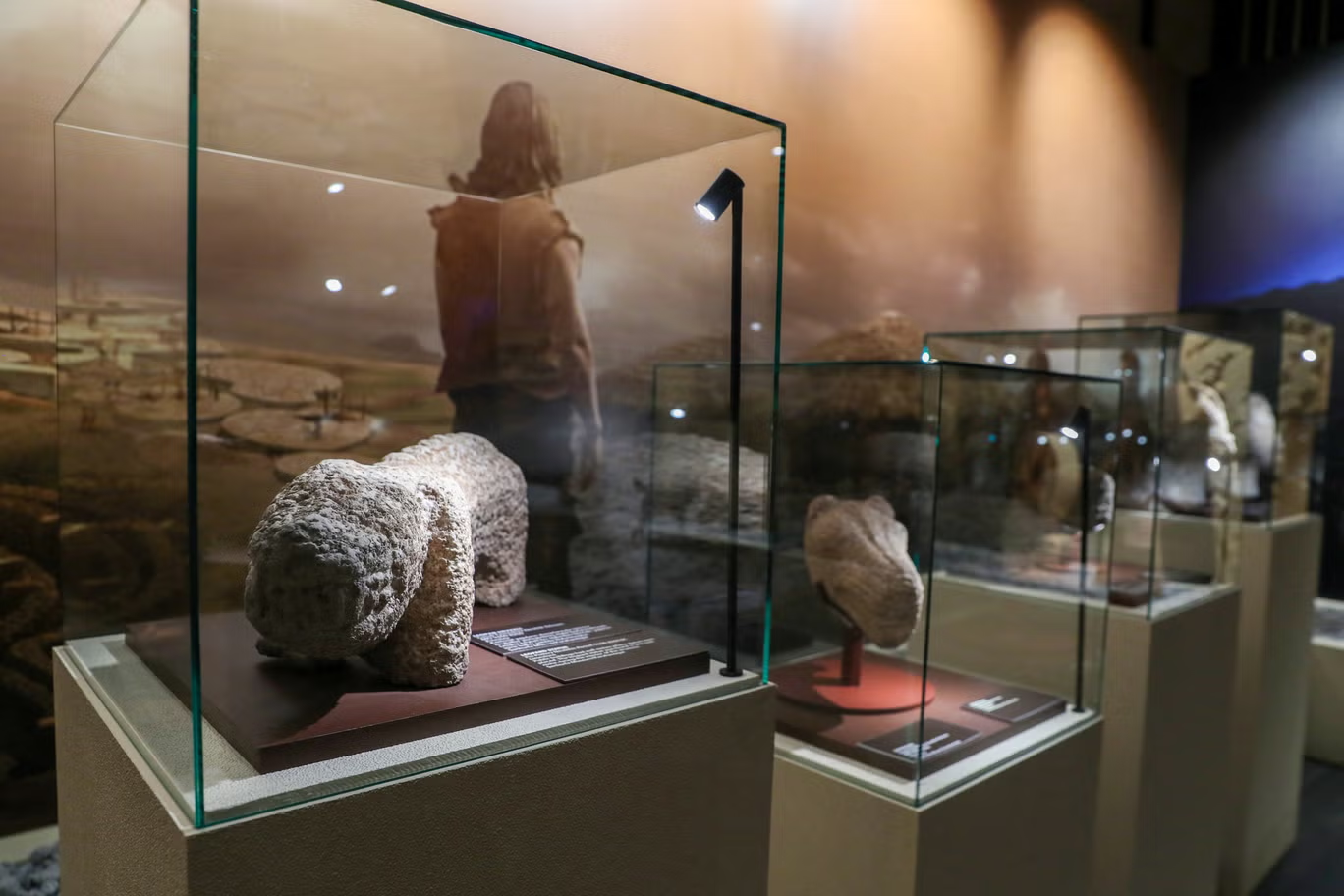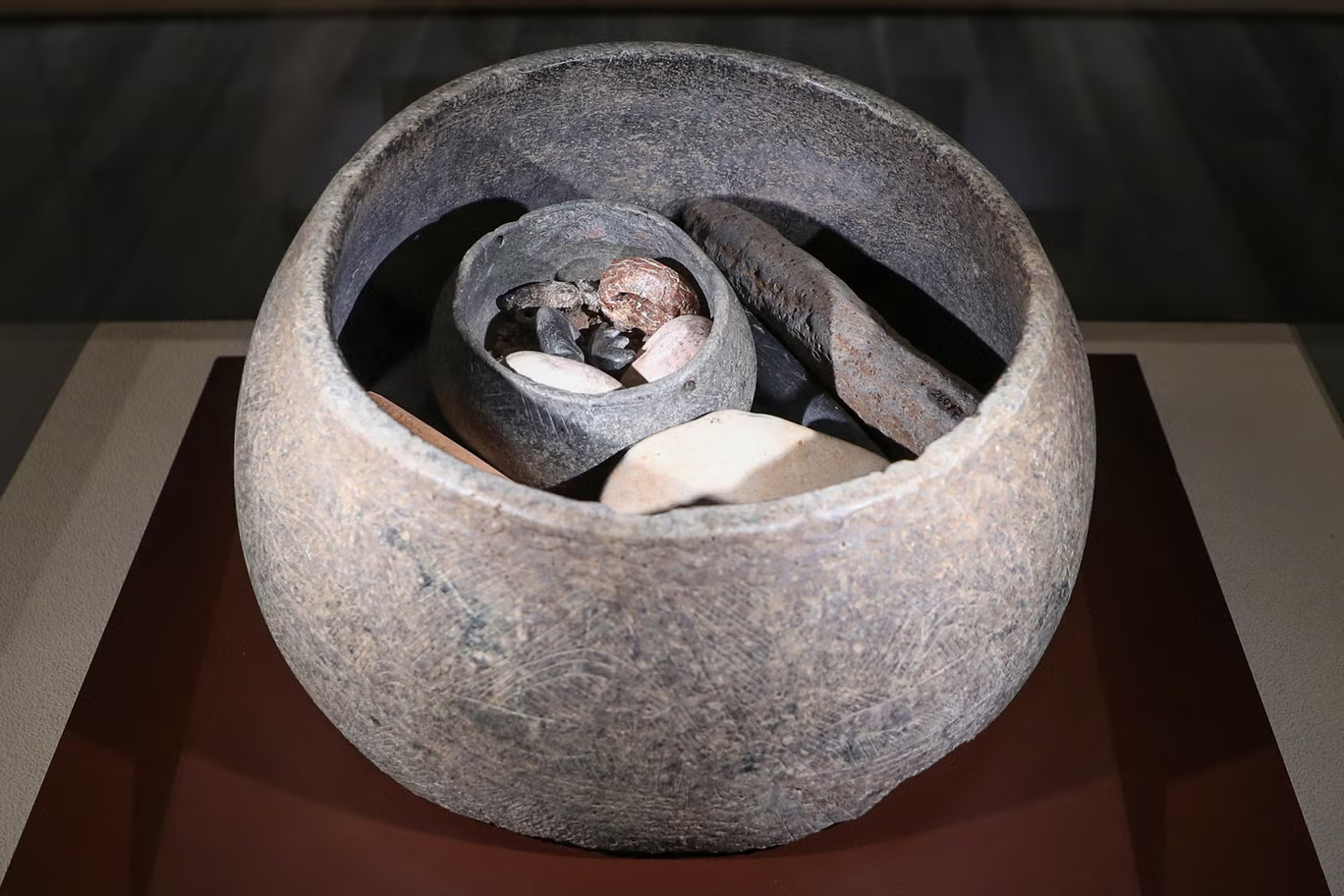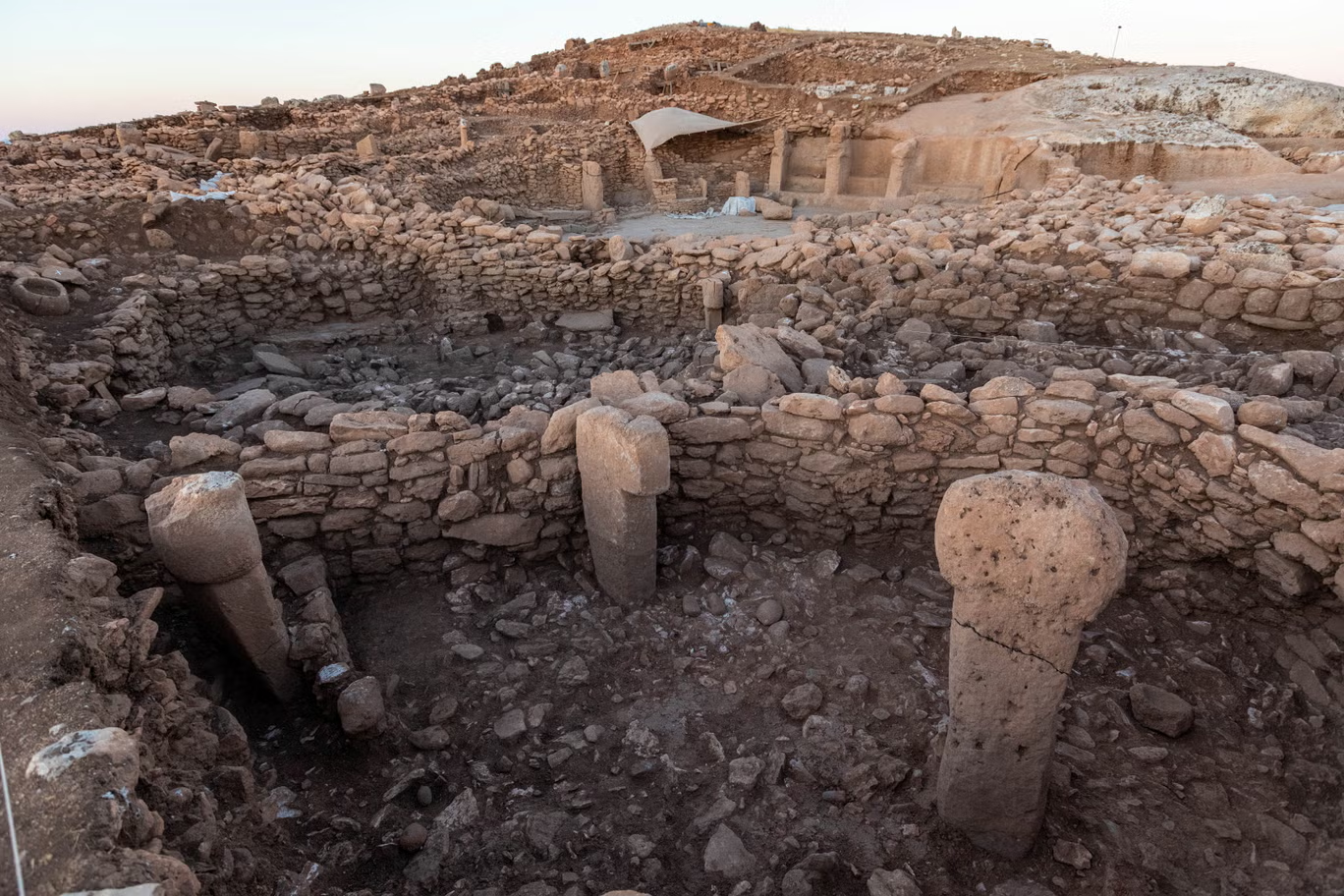Archaeologists in southeastern Turkey have uncovered an extraordinary set of 11,500-year-old carved stone figurines—a fox, a vulture, and a wild boar—shedding new light on the origins of human storytelling.
The discovery was made at Karahantepe, one of the world’s oldest Neolithic settlements, and is now showcased in Ankara’s Golden Age of Archaeology exhibition. What makes this trio remarkable is not just their craftsmanship, but their deliberate arrangement, forming the earliest known example of objects positioned to narrate a story.
Animal figurines of a fox, a vulture, and a wild boar, forming a three-dimensional narrative, discovered at the Karahan Tepe archaeological site, are displayed in the "Golden Age of Archaeology" exhibition
REUTERS
“These carvings prove more than artistry,” said Necmi Karul, head of the Karahantepe excavations. “They show that the community shared common memories, told through narrative scenes carved in stone.”
Each figurine, just 3.5 cm (1.38 inches) tall, was discovered carefully placed inside a container, sealed with a stone lid, and positioned within a larger vessel. Their heads were framed by limestone rings, underscoring the intentional composition of the scene.
Unlike earlier discoveries—typically flat, isolated images etched into immovable surfaces—this find presents a three-dimensional narrative, redefining our understanding of how early humans expressed memory, belief, and identity.
Karul explained that the Neolithic era marked a turning point in human history, when hunter-gatherers settled into permanent communities. “With sedentism came a new social order,” he said. “Narratives like these must have been the bonds that held these early societies together.”
The Karahantepe site, spanning 14 hectares (35 acres) in Turkey’s Şanlıurfa province, has only been partially excavated since 2019. Alongside the figurines, archaeologists have uncovered decorated pillars, circular communal structures, and even a human head carved directly into bedrock.
Archaeological site of Karahan Tepe, one of the world's oldest Neolithic settlements, in Sanliurfa, Turkey
REUTERS
Karahantepe, along with the nearby UNESCO World Heritage site of Göbeklitepe, forms part of the Taş Tepeler (“Stone Hills”) project—a vast cluster of early Neolithic settlements that continue to reshape our picture of prehistoric life.
For Karul, the discoveries are a reminder that our ancestors were far more accomplished than we often assume:
“Modern people like to imagine themselves at the pinnacle of progress. Yet Karahantepe shows us that 11,000 to 12,000 years ago, humans were already masters of art, memory, and storytelling.”









